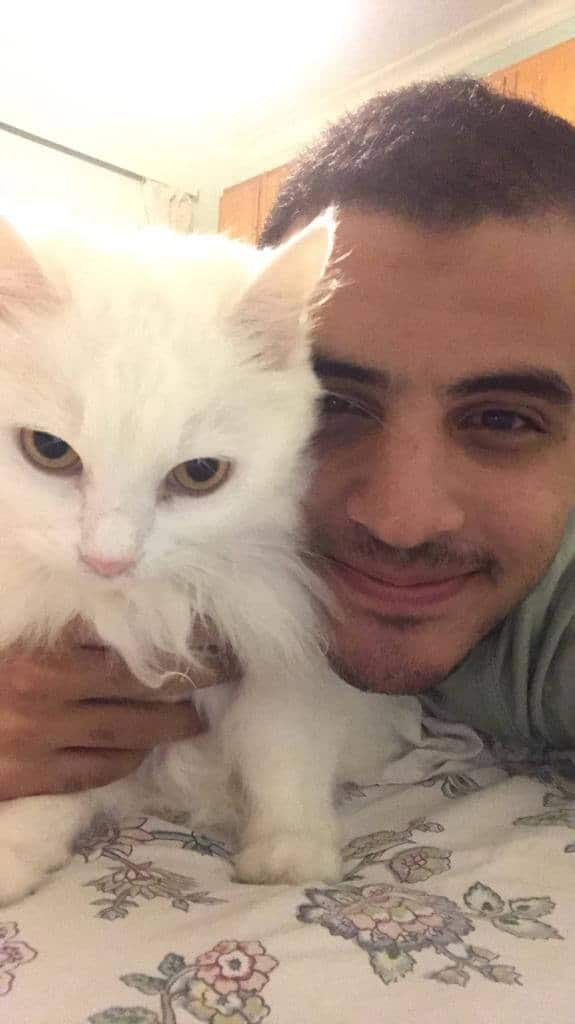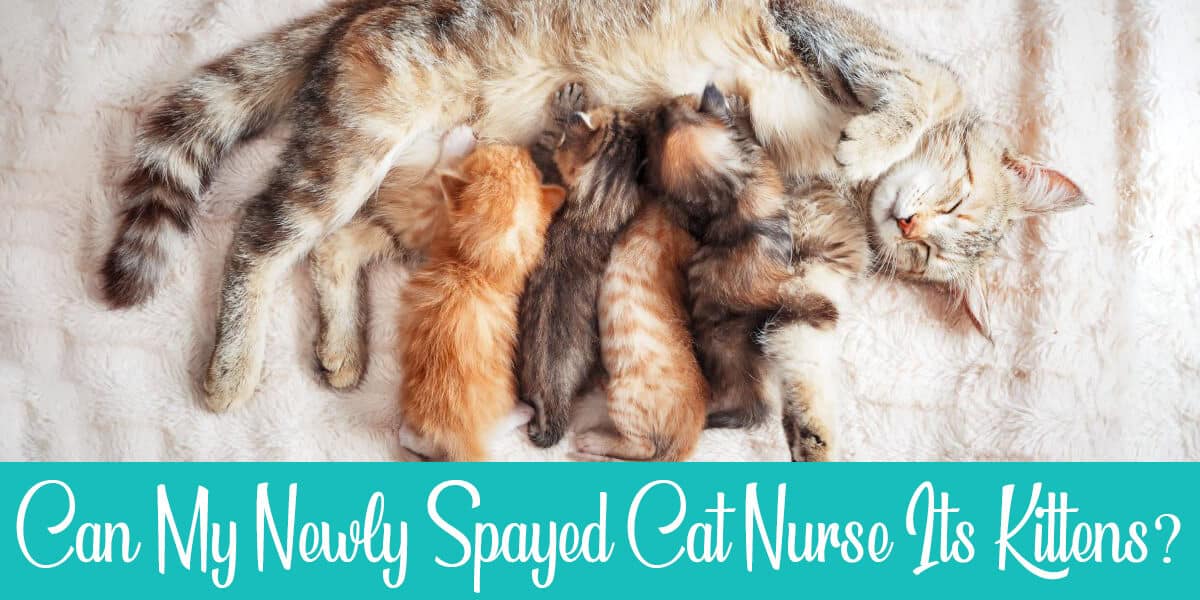Having kittens may also feel like you’ve become a mom. It feels like a newfound responsibility. This responsibility, of course, can balloon if your cat doesn’t get spayed after having a litter of kittens.
If you’ve decided to get your cat spayed before her litter has been weaned, it’s normal to worry whether your cat can still nurse them properly. So, if kittens are having a hard time nursing, you can’t help but worry.
Can kittens survive without being nursed? Can I allow a newly spayed cat to nurse her kittens? How can I help a kitten trying to nurse on spayed cat?
Questions like these might fog your brain, so you decide to explore for some internet advice. And that’s what we’re here to answer!
Table of Contents
Kitten Trying to Nurse on Spayed Cat
Your nursing cat has strong maternal instincts. Despite her sensitive condition, she’ll want to nurse her kittens immediately after being spayed. To ensure her safety, it’s advisable to intervene temporarily by using milk replacements or slowly weaning them.
With the right formula, kittens can still get the necessary nutrients they need without compromising your cat’s health.
Can I Allow a Newly Spayed Cat to Nurse Her Kittens?
If kittens haven’t reached ten weeks old, maternal care is crucial. She’ll want to provide milk for their litter even if she’s still recovering. This is where your help is crucial.
Ensuring that your cat isn’t experiencing any discomfort, and that her kittens are fed and aren’t neglected are only a few ways to look out for your furry friends.
Most importantly, a nursing cat shouldn’t be separated from her litter. It’s advisable to bring her back to her kittens as soon as possible. Separating kittens from their mother can only cause physical and mental trauma later. They’re also more likely to struggle with socializing with other animals and humans.
What Happens If I Spayed My Cat While She’s Still Nursing?
Typically, vets don’t recommend spaying your cat until her litter of kittens has been weaned. This is to avoid any infections your cat can get because of active mammary glands. But, if you’ve found yourself in a situation where you didn’t know your cat had delivered kittens, it’s better to be prepared.
There’s a high chance that your cat’s kittens will still want to be milk-fed, especially if she’s already nursing them before being spayed.
Your cat will still lactate post-surgery as long as her kittens stimulate their mammary glands by suckling. So, there shouldn’t be any worries about milk production. In this situation, it’s beneficial to carefully help both your cat and her kittens to prevent problematic issues such as:
- Kittens not receiving important nutrients
- Cat experiencing pain and discomfort
- Maternal abandonment or aggression
Users also read: why is my mother cat kicking her kittens?
Can Kittens Survive Without Being Nursed?
The short answer is no. Just like with any youngling, nursing is a vital part of kittens’ development. If problems arise, consult your vet on how you can intervene to help your cat and her litter.
Milk Replacements
One of the simplest ways to take care of kittens with an unwilling mother is to feed them yourself using a feeding bottle or an oral syringe. Milk replacements are usually available in supermarkets and can be easily made by adding hot water.
In case store-bought formula isn’t an option, there are many milk replacement formulas that can be made at home using cupboard ingredients.
Formula 1
- One-fourth quart of homogenized milk
- Two egg yolks
- One teaspoon of salad oil
Mix these all together and keep refrigerated for up to two days.
Formula 2
- Two-thirds cup of evaporated milk (approximately one can)
- One egg yolk
- Two tablespoons of corn syrup
Mix all the ingredients well and store it in an airtight container.
To feed the kittens, take half of the recommended feeding amount and mix it with the same amount of boiling water. It’s recommended to store this formula in the refrigerator after each use.
You can also add a human infant liquid vitamin with each feeding once a day for a more nutritious formula.
Formula 3
- Five parts of evaporated milk for every part of boiling water
- Half a teaspoon of bone meal for every two cups of fluid
Mix all together and store in the refrigerator for up to two days.
Weaning
If your cat’s still too sensitive to nurse, weaning can serve as one of the alternatives for nursing. As early as four weeks old, kittens can already be introduced to soft food.
Kitten formula can be mixed with wet food to let them get used to the texture. The ratio of formula to wet food should be adjusted gradually until they can eat wet food alone.
How long does weaning take?
Normally, it’ll take about four to six weeks for kittens to be completely weaned.
At around five to six weeks, kittens can be introduced to kibbles that are mixed with a small amount of water. This trains them to eat more solid food.
In their seventh week, the weaning process should be complete. At this point, kittens are already able to eat completely solid food.
It’s important to note that kittens should be given solid food that is specially formulated for them. These contain the vital nutrients that kittens still need throughout their development stage.
What to do with a weaning kitten?
When kittens are being weaned, they still need the same warmth their mother provides them. If your cat doesn’t want her kittens around her, it’s recommended to build their litter their own nest. For this, the things you’ll need are:
- A pet carrier or a box with tall sides
- Towels
- Heating pad or hot water bottles
- Disposable diapers (optional)
Place the heating pad or hot water bottles on one side in your preferred nesting house. This provides the heat they need as they still can’t regulate their own temperature at this age.
Towels can then be rested on top of the heating mechanism for the kittens to rest on. If cleaning up is a problem for you, laying disposable diapers flat on top of the towels is recommended. When kittens get messy, you can easily dispose of the diapers and lay another set.
What If Kittens Don’t Like Milk Replacements or Wet Food?
If worse comes to worst, and neither your cat nor their kittens have been cooperating with your intervention, the best thing to do is compromise.
The most important thing is to consult your vet first. They should give you the green light to assist your cat in nursing.
If your cat had a flank spay, you’re in luck. vets typically do this to avoid cats’ mammary tissues. This can allow cats to continue nursing after being spayed. It also prevents kittens from kneading on the surgery site.
To help the kittens, try to observe them when they’re being fed. This is to ensure that each kitten gets to eat properly. For larger litters, this may be challenging. And that’s why your presence is needed.
What Should I Do While My Cat Is Recovering?
Whether it be humans or animals, aftercare following a surgical procedure is a necessary part of recovery. Typically, your vet will give you a postoperative program for your cat to ensure her comfort and safety.
According to the American Society for the Prevention of Cruelty to Animals (ASPCA), your cat should be in a quiet and private area. If your place permits, this could be in the bathroom, the laundry room, or even in a big box where your cat can get quality rest. It’s also helpful to provide your newly spayed cat with fresh food and water near her resting place. This lessens their efforts to walk around while their wound is healing.
Usually, your cat will also be prescribed an E-collar to avoid licking the surgery site. It should be adjusted properly, so your cat will still be able to eat and move around comfortably. The VCA Animal Hospital advises keeping them clean to limit your cat’s irritation and possible abrasion on their neck.
The first 12 to 24 hours after the surgery is the most critical time for your cat. At this time, complications such as bleeding, postoperative infections, and seroma may occur. That’s why it’s vital to keep a keen eye on her during their recovery period.
Final Thoughts
The safety of your pets is always a priority. So, it’s no surprise that you tend to worry about their well-being constantly. This just means that you’re a loving and devoted pet parent.
Now, how should you deal with a kitten trying to nurse on spayed cat?
Regardless of what you choose to do for your cat and her litter, keep in mind that this is for their own good. Just remember that whenever you’re in doubt, don’t forget to seek advice from your trusted vet.
Finally, with the help of a little patience and a lot of compassion and understanding, your cat and her kittens will surely stay safe and healthy.

I’ve been living with cats since 2008 and I can confidently say I have more feline friends than humans lol. I currently live with 5 cats in different life stages; two of them are less than one year old, one is 2-ish years old and the oldest two are 9-ish years old. I’ve developed a strong bond with cats over the years and I’m eager to share my experience through this blog. You can learn more about my cats here.




